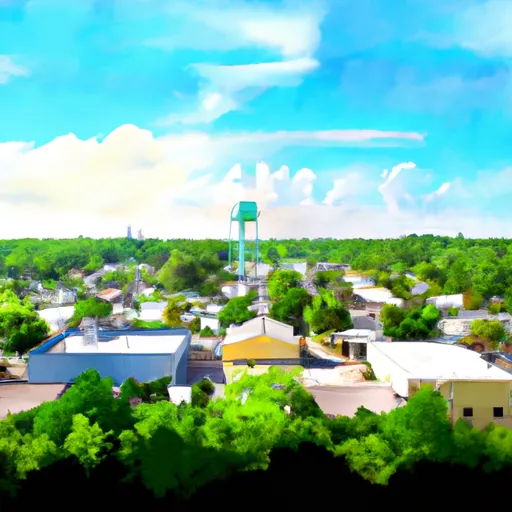-
 Snoflo Premium
Snoflo Premium
Get unlimited access to all our content
With no Ad interruptions! - Start Your Free Trial Login with existing account
Telogia
Eden Index
Climate
7.1
•
Recreation
6.5
•
Community
•
Safeguard
5.1/10

Telogia is a small unincorporated community located in Liberty County, Florida. Situated in the northern part of the state, Telogia experiences a humid subtropical climate. Summers are hot and humid, with temperatures ranging from the mid-80s to mid-90s Fahrenheit. Winters are mild, with temperatures usually in the 60s and 70s. Rainfall is evenly distributed throughout the year, averaging around 60 inches annually.
Hydrology constituents in Telogia are predominantly characterized by the Apalachicola River, which flows nearby. This river is an important water source and supports a diverse aquatic ecosystem. Additionally, numerous wetlands and streams can be found in the area, contributing to the rich hydrological network.
Outdoor recreation opportunities in Telogia are abundant. The Apalachicola National Forest, located to the south, offers opportunities for hiking, camping, fishing, and wildlife viewing. The nearby Apalachicola River provides excellent boating and canoeing experiences. Additionally, Telogia is surrounded by natural beauty, providing opportunities for birdwatching, hunting, and exploring the diverse flora and fauna of the region. The area's natural resources and outdoor activities make it an appealing destination for nature enthusiasts.
What is the Eden Index?
The Snoflo Eden Index serves as a comprehensive rating system for regions, evaluating their desirability through a holistic assessment of climate health, outdoor recreation opportunities, and natural disaster risk, acknowledging the profound impact of these factors on livability and well-being.
Climate Health Indicator (CHI): 7.1
Telogia receives approximately
1592mm of rain per year,
with humidity levels near 89%
and air temperatures averaging around
20°C.
Telogia has a plant hardyness factor of
8, meaning
plants and agriculture in this region tend to thrive here all year round.
By considering the ideal temperature range, reliable water supplies, clean air, and stable seasonal rain or snowpacks, the Climate Health Indicator (CHI) underscores the significance of a healthy climate as the foundation for quality living.
A healthy climate is paramount for ensuring a high quality of life and livability in a region, fostering both physical well-being and environmental harmony. This can be characterized by ideal temperatures, reliable access to water supplies, clean air, and consistent seasonal rain or snowpacks.
Weather Forecast
Streamflow Conditions
Apalachicola
Area Rivers
Apalachicola
Snowpack Depths
Apalachicola
Reservoir Storage Capacity
Apalachicola
Groundwater Levels
Recreational Opportunity Index (ROI): 6.5
The Recreational Opportunity Index (ROI) recognizes the value of outdoor recreational options, such as parks, hiking trails, camping sites, and fishing spots, while acknowledging that climate plays a pivotal role in ensuring the comfort and consistency of these experiences.
Access to outdoor recreational opportunities, encompassing activities such as parks, hiking, camping, and fishing, is crucial for overall well-being, and the climate plays a pivotal role in enabling and enhancing these experiences, ensuring that individuals can engage in nature-based activities comfortably and consistently.
Camping Areas
| Campground | Campsites | Reservations | Toilets | Showers | Elevation |
|---|---|---|---|---|---|
| Torreya State Park | None | 263 ft | |||
| Camel Lake | None | 83 ft | |||
| Chattahoochee City Park | None | 96 ft | |||
| Hickory Landing | 20 | 14 ft | |||
| Three Rivers State Park | None | 180 ft | |||
| Cotton Landing | 10 | 14 ft | |||
| Whitehead | 13 | 21 ft | |||
| Dr. Julian G. Bruce State Park | 60 | 9 ft | |||
| Eastbank - Lake Seminole | 40 | 87 ft | |||
| Wright Lake | 36 | 23 ft |
Nearby Ski Areas
Catastrophe Safeguard Index (CSI):
The Catastrophe Safeguard Index (CSI) recognizes that natural disaster risk, encompassing floods, fires, hurricanes, and tornadoes, can drastically affect safety and the overall appeal of an area.
The level of natural disaster risk in a region significantly affects safety and the overall livability, with climate change amplifying these risks by potentially increasing the frequency and intensity of events like floods, fires, hurricanes, and tornadoes, thereby posing substantial challenges to community resilience and well-being.
Community Resilience Indicator (CRI):
The Community Resilience Indicator (CRI) recognizes that education, healthcare, and socioeconomics are crucial to the well-being of a region. The CRI acknowledges the profound impact of these elements on residents' overall quality of life. By evaluating educational resources, healthcare accessibility, and economic inclusivity, the index captures the essential aspects that contribute to a thriving community, fostering resident satisfaction, equity, and social cohesion.

